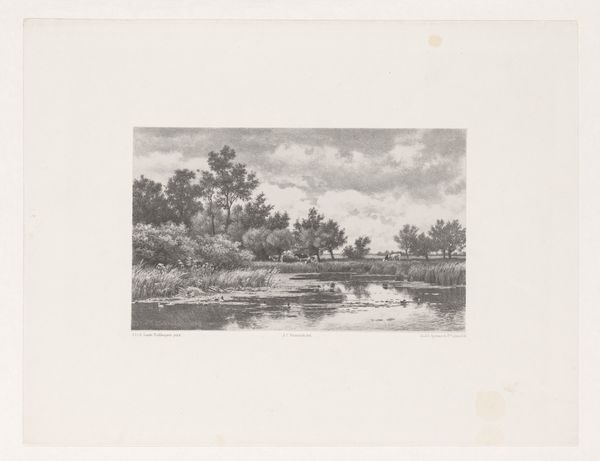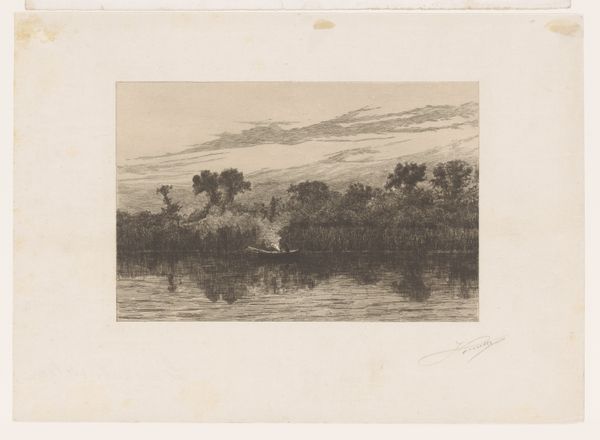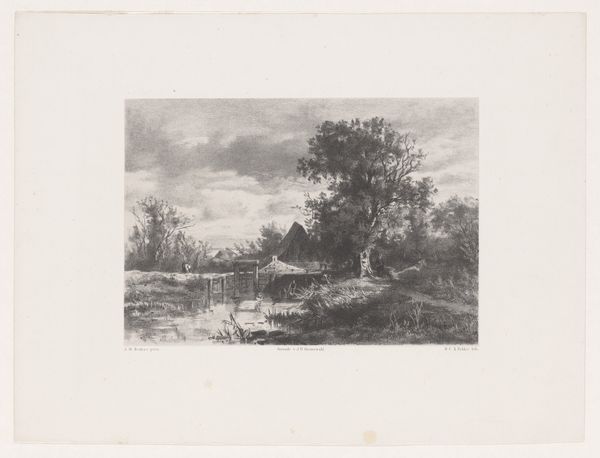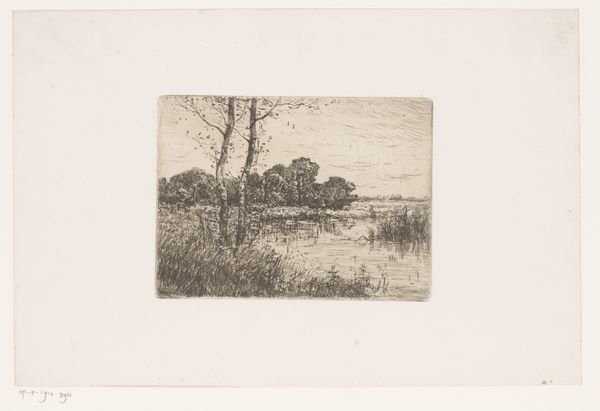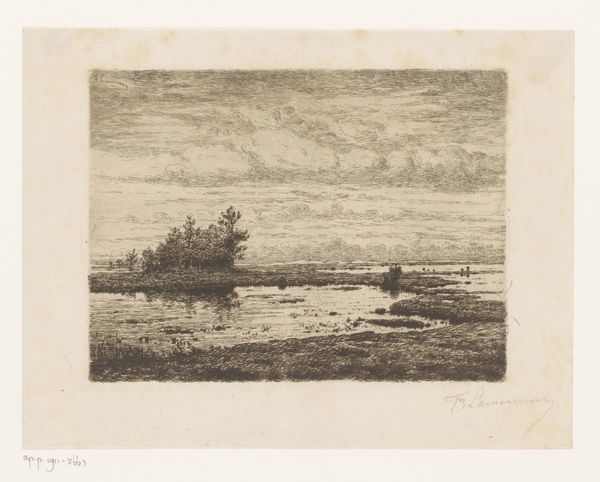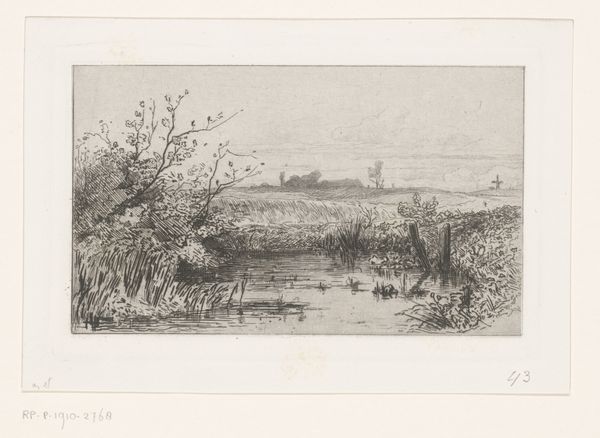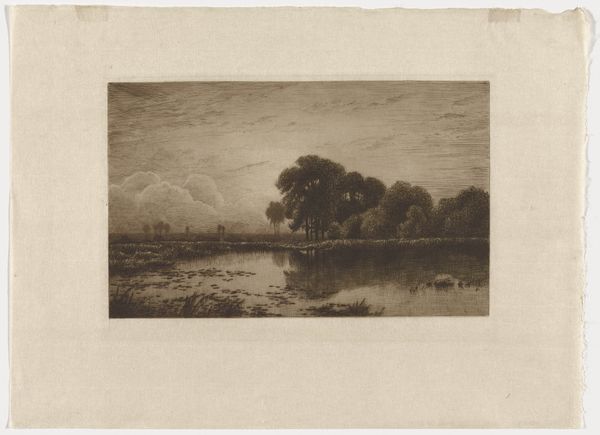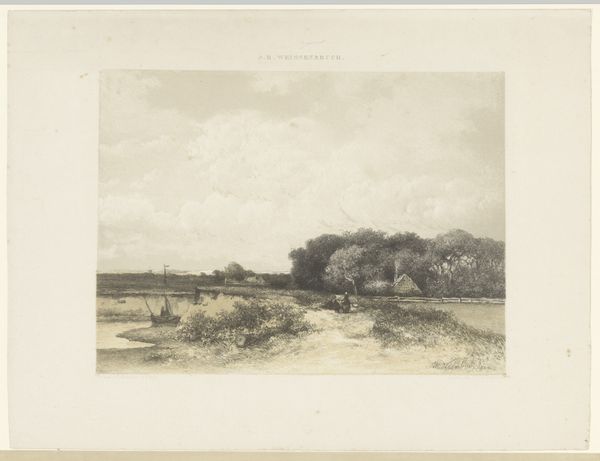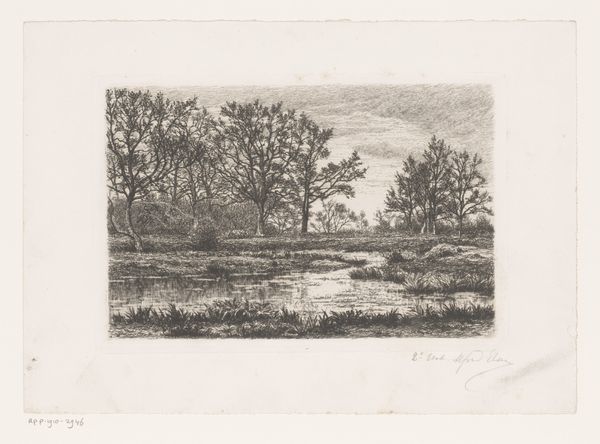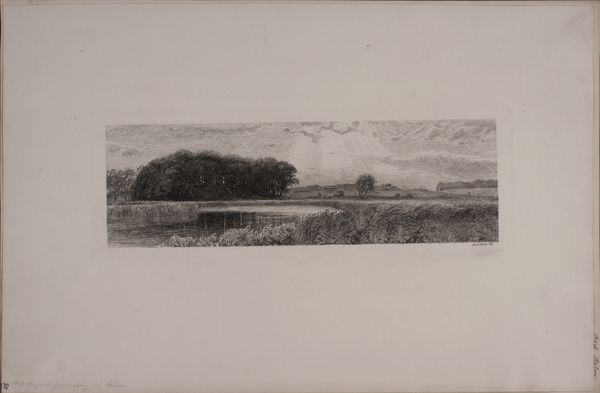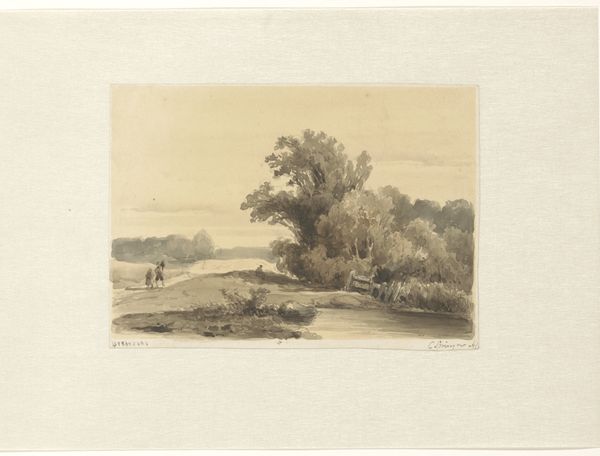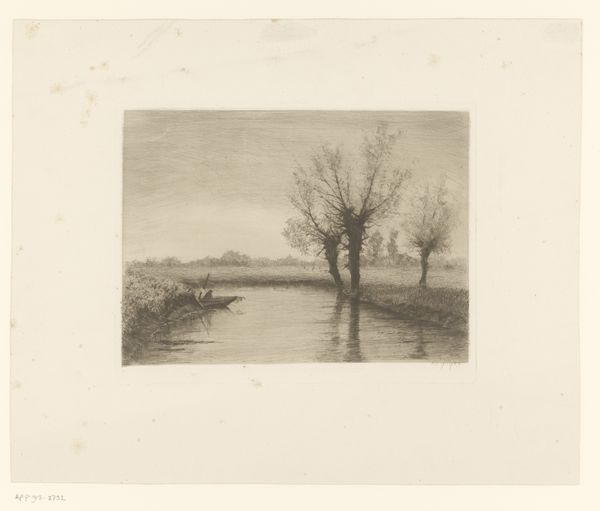
print, etching
# print
#
etching
#
landscape
#
line
#
realism
Dimensions: height 287 mm, width 408 mm
Copyright: Rijks Museum: Open Domain
Curator: This is "Landscape with Sailing Ships on the Water," an etching created in 1892 by Richard Nicolaüs Roland Holst. It is currently held in the collection of the Rijksmuseum. Editor: It’s a very subdued piece, almost monochromatic. The details are remarkably precise, but there's a kind of stillness that feels heavy, like the air before a storm. Curator: I'm particularly drawn to how the artist uses the etching technique. You can really see the process of how each line, each mark contributes to building the whole image. Holst’s commitment to capturing this scene suggests an investment beyond the purely aesthetic; one must think about how such an image engages with Dutch identity in an era of growing industrialisation. Editor: Yes, consider the relationship to Dutch maritime history implied in the sailboat motif. But let’s also note the choice of printmaking itself, and ask: why printmaking? Why this deliberate engagement with mass production technologies? The choice to create multiples has social implications, potentially democratizing access to landscape art in a specific period. Curator: I see the print medium as highlighting access to a particular idealized vision of the Netherlands. The landscape presented is timeless, rural. Think of the historical tension in this period between tradition and modernity, and consider how Holst navigates these socio-political divides. Editor: Absolutely. You also have to consider how a piece like this circulates within art institutions, reinforcing or challenging particular tastes and hierarchies. Were images of labour, peasantry and industrial might deemed aesthetically appealing for institutions that promoted cultural capital, for instance? And how would different viewers' social positions shape their interpretation of such art? Curator: That's a really crucial point. Perhaps, even today, we carry some of those same biases with us when we look at this scene. Examining that context – understanding that relationship between art, social history, and class, really enriches the viewing experience. Editor: For sure. The meticulous lines of this etching seem to point not only to technical skills but to wider networks of exchange of raw material that shaped landscape imaginaries. I’m also prompted to see how art-making acts as a register of economic relationships, embedded as Holst's images is in wider economies of the image in turn-of-the-century Netherlands. Curator: So, more than just a pretty picture, really. A social artifact revealing networks of power and making in its own time. Editor: Exactly, and by focusing on material production and public display, we recognize it's never been a ‘neutral’ act of creation or viewership.
Comments
No comments
Be the first to comment and join the conversation on the ultimate creative platform.
